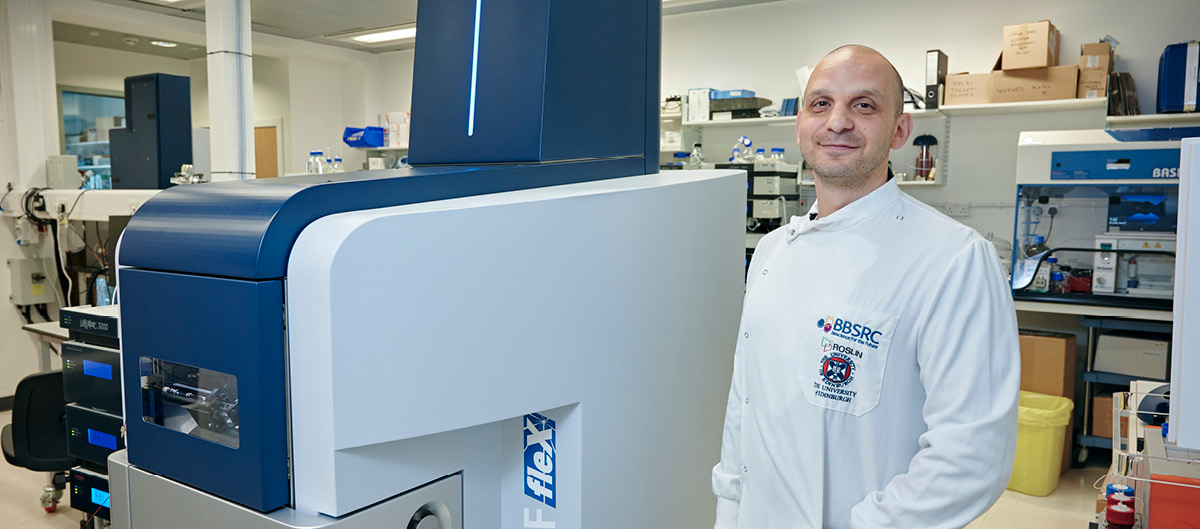
Devastating childhood disease
According to the Boston Children’s Hospital, there are roughly 14,000 children known to have Batten disease. In the UK, Batten disease affects between 100 and 150 children and young adults. In a country like the USA this is around 2-4 in every 100,000 children. It is inherited from two symptomless parents who each carry a rare recessive gene mutation. That mutation interferes with the operation of lysosomes, which act as the waste disposal and recycling systems for cells. Children who carry two copies of the faulty gene suffer devastating consequences including loss of vision, impaired cognition, mobility problems, seizures and early death.
There are several types of Batten disease, but one of the more rapid types is CLN1. This is a research focus for Tom Wishart’s lab at the Roslin Institute. The approach enables detailed studies of how the disease affects various functions in the body and could give insight into the effectiveness of potential treatments.
Gene-editing expertise: CRISPR
Working under tight legislation that controls the use of animals in research which includes an ethical review of the proposed work and close veterinary supervision, the Wishart lab made use of gene-editing expertise embedded in the world-renowned Roslin Institute. Here, experts from the Whitelaw group used a technique called CRISPR to generate the most common human CLN1 gene mutation within the sheep CLN1 gene. This has allowed researchers to investigate the symptoms of Batten disease in detail, including changes in behaviour and brain size.
Our results show that these sheep are a very robust model of the CLN1 form of Batten disease and will prove crucial for assessing the effectiveness of future therapies.
Tom Wishart
Professor of Molecular Anatomy at the Roslin Institute
Research aims to help young patients
Researchers around the world are working on several potential treatments, including gene therapy in which healthy genes are delivered by viruses to replace mutated versions. This is a truly multi-disciplinary collaborative effort involving contributors from across the University of Edinburgh with expertise including but not limited to: genome editing, Biochemistry and molecular biology, human and comparative anatomy, disease modelling, proteomics and biomarker discovery, clinical assessment expertise and veterinary clinical imaging and human neuroradiology, human neurosurgery, veterinary surgery, veterinary anaesthesia and the highest standards of animal husbandry and welfare with all the work monitored by a highly dedicated team of named veterinary surgeons.
This work can only be done by a team of researchers. We are fortunate that we have so many talented people at UoE who can work together with other key external collaborators such as Dr Jonathan Cooper (WashU) to try to make a difference in the lives of children with this devastating neurodegenerative condition.
Tom Wishart
Professor of Molecular Anatomy at the Roslin Institute
Tom and his collaborators are making significant steps in our understanding of Batten disease and determining the potential of different therapeutic approaches. This work is enabling developments on three fronts:
- to find new biomarkers
- to assess therapy outcomes
- to track the disease progression
We were able to study the sheep before their outward symptoms developed which allowed us to gain a new and deeper understanding of how the disease unfolds. This knowledge will be invaluable, with the ultimate aim of finding treatments that could add years to the lives of young patients.
Tom Wishart
Professor of Molecular Anatomy at the Roslin Institute

